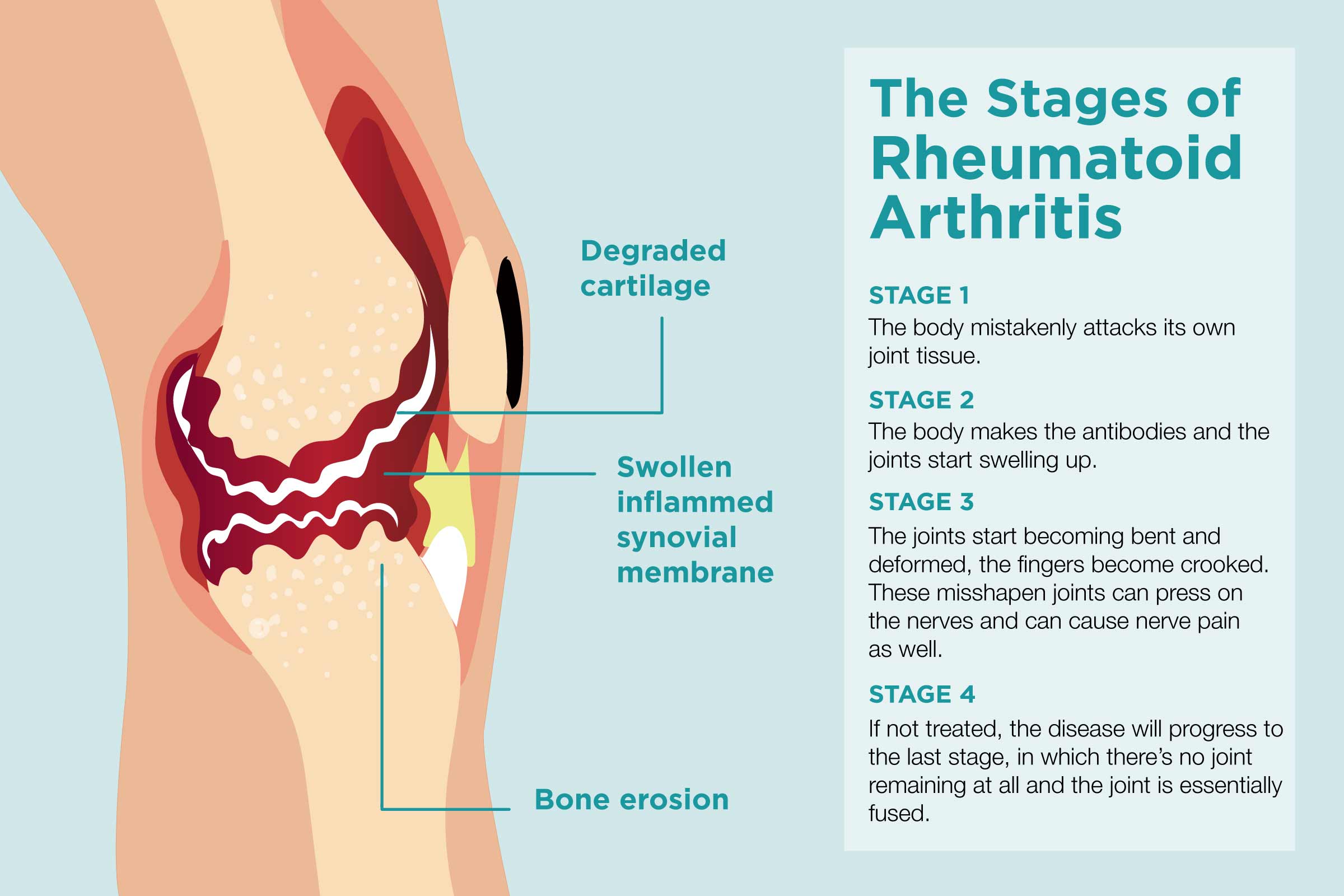If you are suffering from Rheumatoid Arthritis, there are many symptoms you need to watch out for. Symptoms include pain, stiffness, and inflammation in joints. You may also experience pain and stiffness in the neck or spine. Other parts of the body can also be affected.
Subcutaneous nodules
Rheumatoid arthritis (RA) patients are prone to develop subcutaneous nodules, which are small lumps that are painless but can interfere with movement and hand function. They typically appear on the elbows and Achilles tendons. However, they can also occur on the hands and feet.
These nodules are caused by rheumatic vasculitis, which is a disorder characterized by the activation of the complement cascade and the precipitation of immune complexes in small vessels. During the course of the disease, rheumatic nodules can be a focus for systemic infections, but they are generally benign.
The most common location for rheumatoid nodules is the olecranon bursa. Some nodules are attached to the periosteum or the periarticular capsule. Larger nodules tend to be multilocular and contain large bursal pockets. Occasionally, a nodule forms a draining sinus.
Subcutaneous nodules are nontender and usually skin-colored. They may be mobile and may be attached to underlying tissue. If the nodules are attached, they may be difficult to remove.
Inflammation of the cervical spine
Rheumatoid arthritis is an inflammatory disease that affects many joints in the body, including those in the cervical spine. The symptoms of RA can be very painful and interfere with daily activities. If the disease is left untreated, it can lead to serious complications, such as paralysis, nerve damage, and myelopathy.
Inflammation in the cervical spine can cause a stiff neck, as well as headaches. A doctor can examine your neck to diagnose rheumatoid arthritis, and can treat the condition through physical therapy. Physical therapy can increase your strength and flexibility, and help you move with less pain.
Your doctor may prescribe drugs to slow the disease’s progression. These include disease-modifying anti-rheumatic drugs (DMARDs) such as methotrexate, leflunomide, and tofacitinib. Some patients also need a steroid injection to reduce inflammation. An epidural steroid injection is one option.
X-rays can help determine the extent of joint damage. Bony spurs are common in RA, and can cause the spine to become unstable. When bone spurs are detected, you may need a surgical procedure to remove them.
Stiffness in the joints
Rheumatoid arthritis (RA) is an autoimmune disease that causes inflammation of the joints. It can also affect other tissues of the body, including the lungs, heart and other organs.
RA symptoms can vary from person to person. They include aches, swelling, joint pain, fatigue and redness. Some people experience the symptoms at the beginning of the disease while others have long periods of time without any symptoms.
There are several ways to treat rheumatoid arthritis. Your doctor may recommend drugs to reduce your symptoms or you may choose to try complementary treatments. These may reduce pain but won’t stop the damage to your joints.
You can find out if you have rheumatoid arthritis by getting a blood test and x-rays. This will help your doctor identify the cause of your symptoms and will allow them to recommend a treatment plan. If your rheumatoid arthritis isn’t treated, it can become worse.
Taking breaks throughout the day can also help you manage your symptoms. Avoid doing activities that require a lot of moving. Instead, walk or take a break for a few minutes. Rest can reduce your inflammation and keep your energy levels high.
Pain in other parts of the body
Rheumatoid arthritis (RA) symptoms include pain in other parts of the body, including the spine, chest, and lungs. The disease causes inflammation of the joints and the lining of the joints. Pain in these areas can be very severe. It is important to diagnose RA early so that patients can avoid serious complications. Fortunately, RA is treatable and remission is possible.
The first signs of rheumatoid arthritis are usually swelling and tenderness of the joints. They may be present for several hours or a day, or they may begin at a different time. Some people may not experience any symptoms. Others will have periods when their arthritis is relatively mild.
A low-grade fever is another symptom of rheumatoid disease. Patients with RA have an increased risk of pulmonary fibrosis, a progressive disease of the lungs. Inflammation of the lungs can cause shortness of breath.
RA can also cause damage to the heart. During a flare, the blood vessels in the heart are damaged and enlarged. This can lead to a condition called pericarditis.